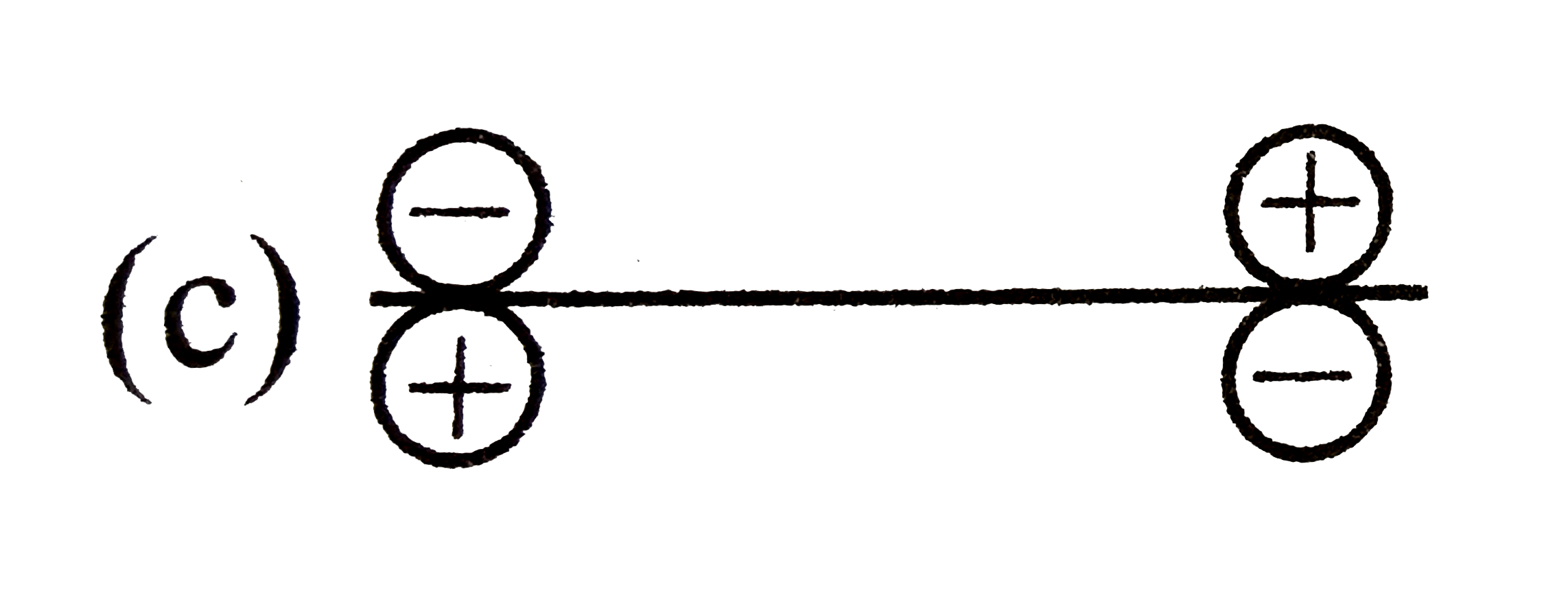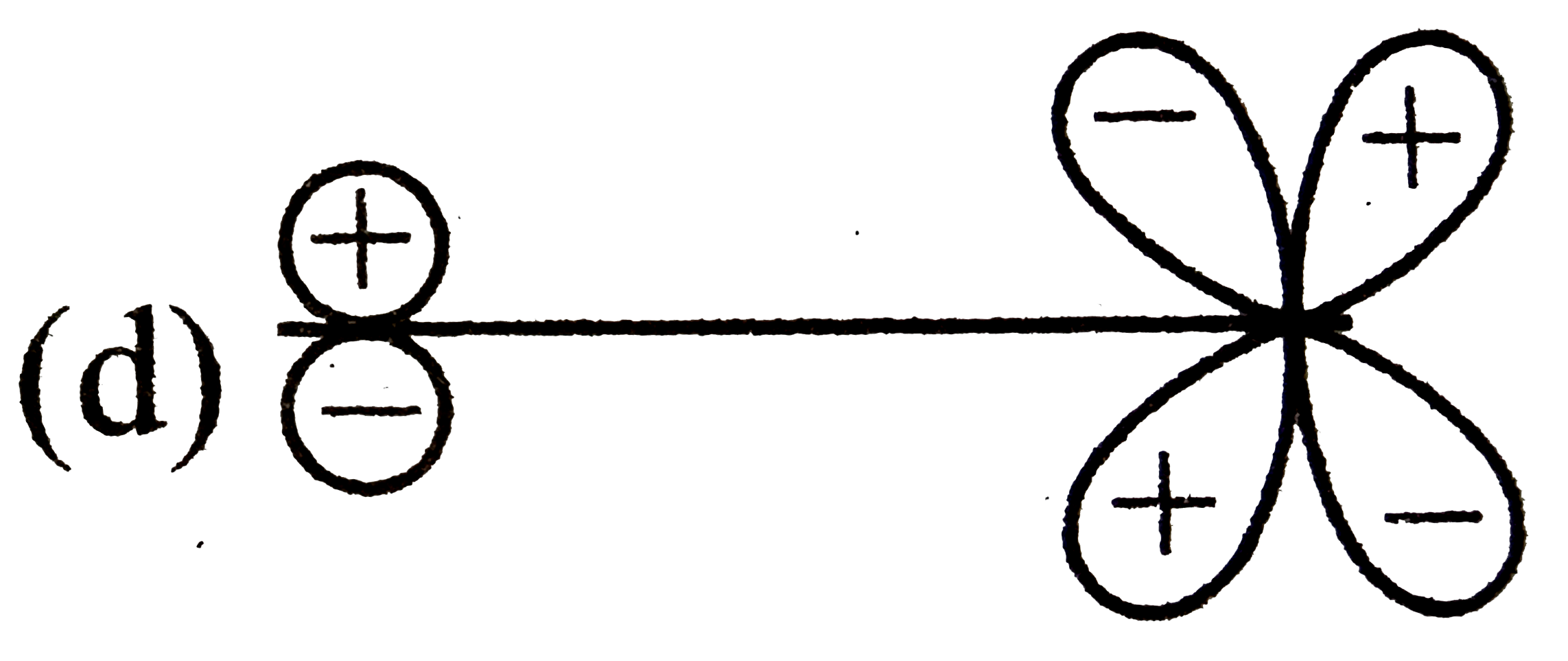Which of the following leads to bonding?




The correct Answer is:B
To determine which of the given options leads to bonding, we will analyze the types of orbital overlaps presented in each option.
1. Identify the Orbitals in Each Option:
- Option A: S orbital (spherical) and P orbital (dumbbell).
- Option B: S orbital and P orbital.
- Option C: Two P orbitals.
- Option D: One P orbital and one D orbital.
2. Analyze Option A:
- The S orbital and P orbital overlap unsymmetrically.
- This type of overlap is referred to as "zero overlapping" and does not lead to bonding.
- Conclusion: Option A does not lead to bonding.
3. Analyze Option B:
- The S orbital and P orbital overlap head-on.
- This is a symmetrical overlap and is considered the most stable type of overlap.
- The lobes of both orbitals have the same sign, which promotes bonding.
- Conclusion: Option B leads to bonding.
4. Analyze Option C:
- Two P orbitals are overlapping with opposite signs.
- This results in "negative overlapping," which is not effective for bond formation.
- Conclusion: Option C does not lead to bonding.
5. Analyze Option D:
- One P orbital and one D orbital are overlapping, but both have negative signs.
- This also results in "negative overlapping," which is insufficient for bond formation.
- Conclusion: Option D does not lead to bonding.
6. Final Conclusion:
- The only option that leads to bonding is Option B.
- Option A: S orbital (spherical) and P orbital (dumbbell).
- Option B: S orbital and P orbital.
- Option C: Two P orbitals.
- Option D: One P orbital and one D orbital.
- The S orbital and P orbital overlap unsymmetrically.
- This type of overlap is referred to as "zero overlapping" and does not lead to bonding.
- Conclusion: Option A does not lead to bonding.
- The S orbital and P orbital overlap head-on.
- This is a symmetrical overlap and is considered the most stable type of overlap.
- The lobes of both orbitals have the same sign, which promotes bonding.
- Conclusion: Option B leads to bonding.
- Two P orbitals are overlapping with opposite signs.
- This results in "negative overlapping," which is not effective for bond formation.
- Conclusion: Option C does not lead to bonding.
- One P orbital and one D orbital are overlapping, but both have negative signs.
- This also results in "negative overlapping," which is insufficient for bond formation.
- Conclusion: Option D does not lead to bonding.
- The only option that leads to bonding is Option B.
Topper's Solved these Questions
- CHEMICAL BONDING AND MOLECULAR STRUCTUREBOOK - A2ZCHAPTER - CHEMICAL BONDING AND MOLECULAR STRUCTUREEXERCISE - Vsepr Theory And Hybridisation
46 Videos
- CHEMICAL BONDING AND MOLECULAR STRUCTUREBOOK - A2ZCHAPTER - CHEMICAL BONDING AND MOLECULAR STRUCTUREEXERCISE - Molecular Orbitial Theory
42 Videos
- CHEMICAL BONDING AND MOLECULAR STRUCTUREBOOK - A2ZCHAPTER - CHEMICAL BONDING AND MOLECULAR STRUCTUREEXERCISE - Dipole Moment
28 Videos
- ATOMIC STRUCTUREBOOK - A2ZCHAPTER - ATOMIC STRUCTUREEXERCISE - Section D - Chapter End Test
30 Videos
- CHEMICAL EQUILIBRIUMBOOK - A2ZCHAPTER - CHEMICAL EQUILIBRIUMEXERCISE - Section D - Chapter End Test
30 Videos
Similar Questions
Knowledge Check
Which of the following leads to points mutation?
AInsertionBDeletionCSubstitutionDAll of the aboveWhich of the following leads to transmission of HIV?
AShaking handsBMosquito bitesCSharing mealsDNone of theseThe deficiency of which one of the following leads to dental caries ?
AIronBCopperCFluorineDZinc
Which of the following leads to air pollution?
View SolutionWhich of the following is weak bond?
View SolutionWhich of the following is strongest bond?
View SolutionWhich of the following leads to the risk of permanent heart damage?
View SolutionWhich of the following leads to the formation of an alkyl halide ?
View Solution
